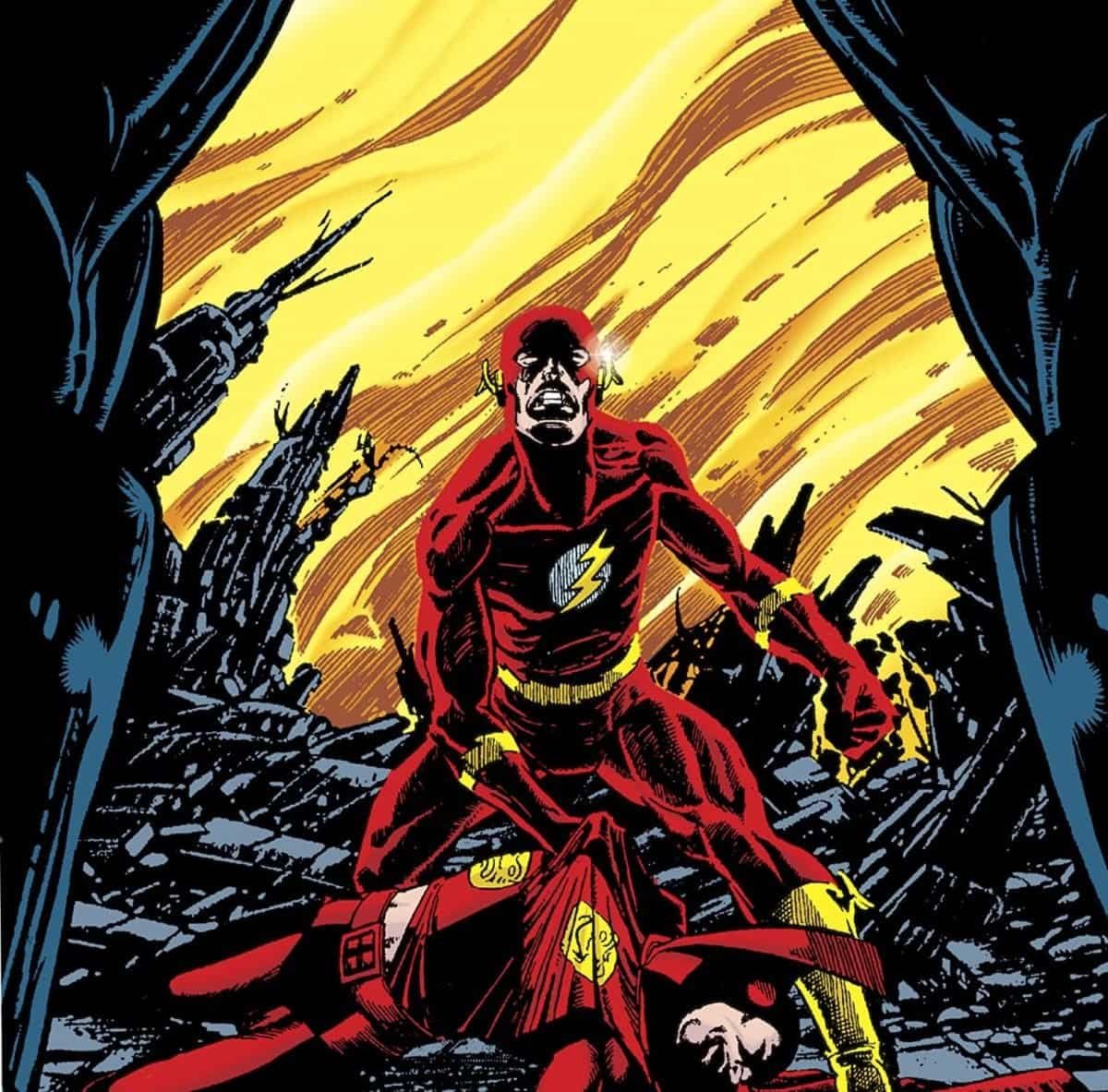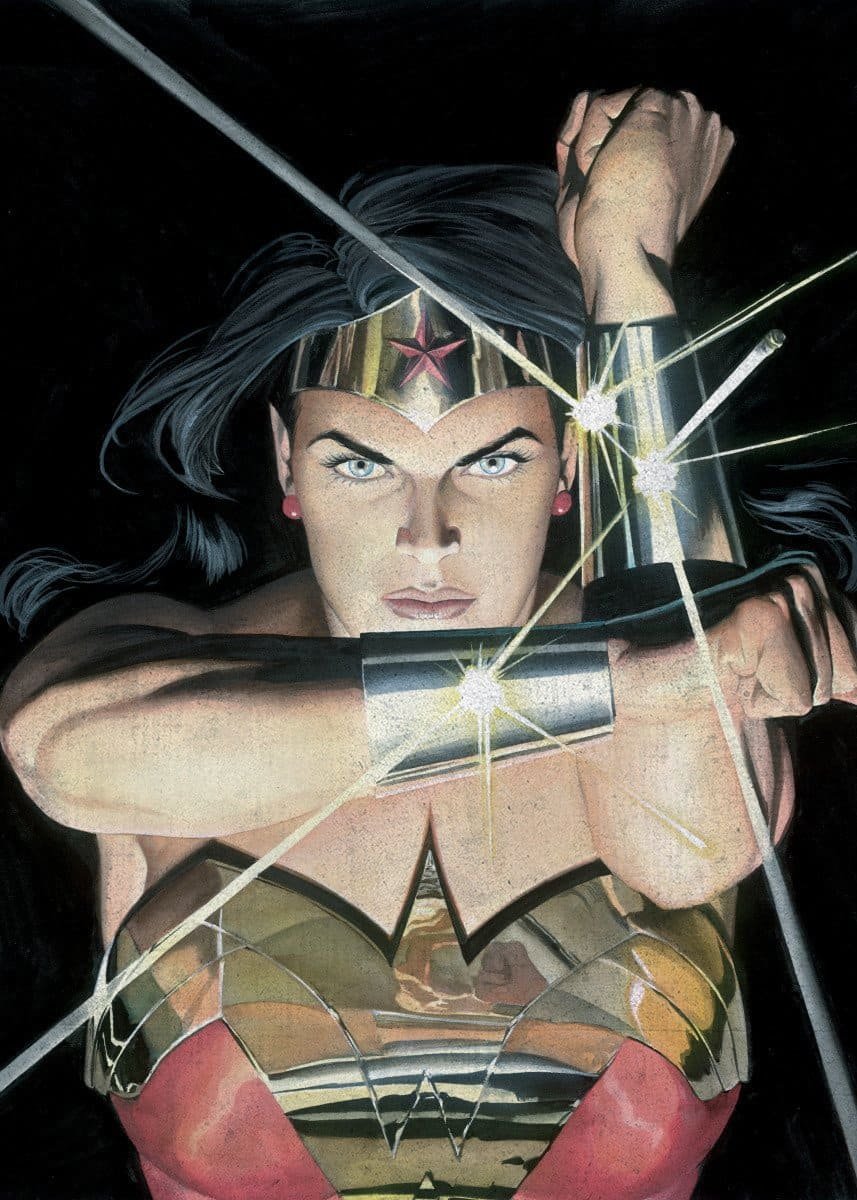The Crisis at DC Comics are events that usually gather the vast majority of characters from their universe to face a certain threat and these stories end up with radical changes in the DC landscape, sometimes even leading to reboots of the whole universe and providing new readers with a lot of starting points to get into the comics.
Of course, DC’s Crisis events are often the subject of debate because there are fans that prefer Marvel’s approach of a long-standing continuity since their beginnings in the early 60s while DC tends to restart things after a certain amount of time. They are two very different approaches and we’ll leave it to you, the reader, to decide what the best choice is.
So, in this article we’re going to talk to you about all the different Crisis events that DC Comics has endured throughout the years. While the vast majority of them have the term Crisis on their title, it’s worth pointing out that there are events of a similar magnitude that don’t have the title, but by all effects have the same impact and consequences.
Are you ready? Let’s do this!
DC Comics Crisis Events
1. Crisis on Infinite Earths (1985).
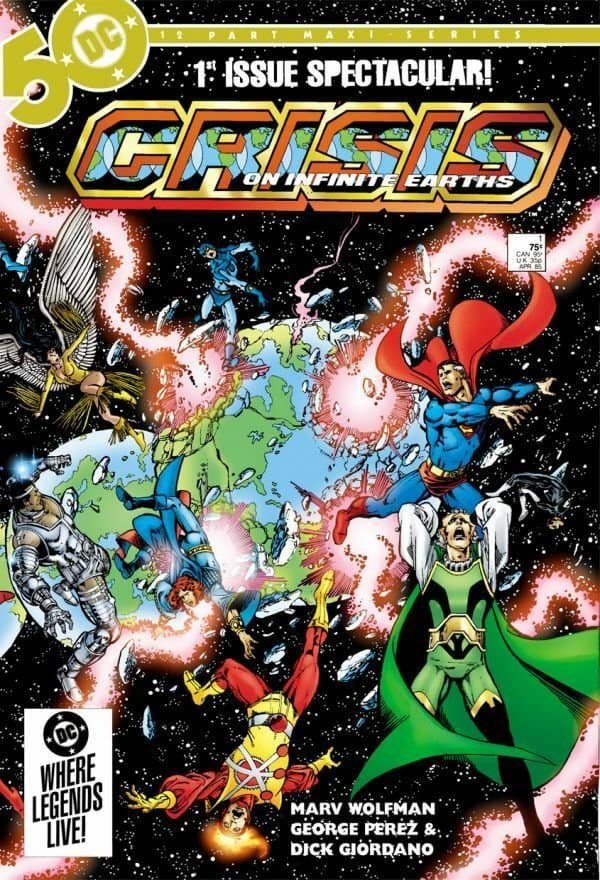
DC already played with the concept on Crisis on alternate earths around the time they decided to make Crisis on Infinite Earths, with the heroes of the main DC Universe going to adventures on other universes, but they were in a much smaller scope and one of the consequences of this was that they had a very convoluted and complex continuity: you had two Superman, two Batman, two Wonder Woman and so on. You had the Justice League of America on one earth and the Justice Society of America on another. Captain Marvel/Shazam had his own universe and the characters they recently purchased from Charlton Comics (Blue Beetle, Captain Atom and the Question being the most important) also had their own.
So what did DC do? They put writer Marv Wolfman and artist George Perez, the team in charge of their most successful book at the time, New Teen Titans, in charge of creating an event that would conclude with a reboot of the whole comics line and creating just one, cohesive universe instead of a vast multiverse. That’s how we got Crisis on Infinite Earths in 1985 as the first major DC Crisis.
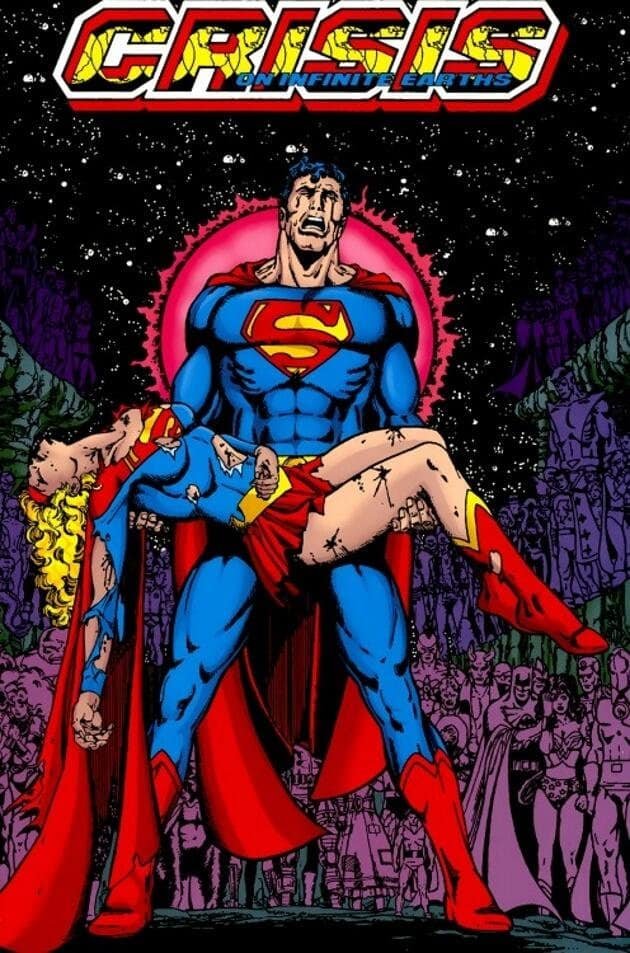
The story itself is actually quite straightforward: there’s an all-powerful called the Anti-Monitor, who comes from the anti-matter universe, that is destroying multiple universes and there is an opposing force, called the Monitor, who gathers warriors from across the Multiverse to save their universes and existence as a whole.
It’s a very simple story in concept, but you get to see all the characters DC had until that point (and I mean everybody, as George Perez was adamant in wanting to draw them all, which must be a comic book milestone) and an event of this magnitude was never done before, with many earths dying and many characters dying in the process.
I really enjoyed this story because the scope is incredible, but it maintains a very human nature, as we see many heroes having to cope with the deaths of their universes and the loss of some of their peers and families during the war against the Anti-Monitor. Looking back now, Crisis on Infinite Earths really gives you a very definitive feel–that the DC that you know is coming to an end, and I can dispute that considering that the company progressively changed after this event.
I would argue that all the DC Crisis require a degree of knowledge and experience with this company’s universe, so I think this event, like the rest in this list, would appeal more to DC fans than the overall public.
As usual for this type of big events, I’d recommend going for the Hardcover. But giving the current Covid quarantine, go for the digital version and read it now!
Now let’s suppose you’re a real comics lover like me and have decided to break the bank… check this out! It’s gold!
2. Zero Hour: Crisis on Time! (1994).
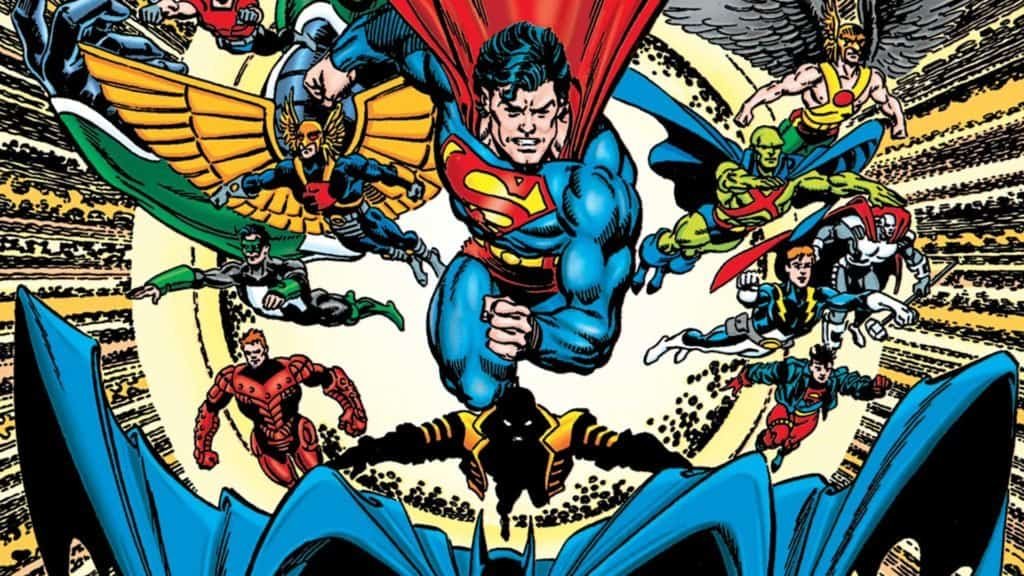
This story is somewhat of a forgotten Crisis, which is curious considering that it was DC’s biggest event in terms of scope and magnitude during the 1990s, but I guess that says a lot about the reception it had at the time.
Despite the efforts put on streamlining’s DC universe and continuity through Crisis on Infinite Earths, there were still incoherence in some characters, especially Hawkman, due to the latter having two very different origins (him being a descendant from Egyptian magic and him being from another planet). There were many different elements to fix, so writers and artists Dan Jurgens and Jerry Ordway were put in charge to create an event that would make everything a lot more coherent and make sense of some things that editorial didn’t manage to fix before.
That’s how we got Zero Hour in 1994, which also deals with the aftermath of a Green Lantern storyline that happened a few months before called Emerald Twilight, where the then-main Lantern, Hal Jordan, has a mental breakdown due to the destruction of home city, Coast City, during the Reign of the Supermen event (if you ever wonder why there are so many events in comics these days… well, it started in the early 90s). He reveled against his masters, the Guardians of the Universe, and killed several Lanterns to gather all the power of the Energy Battery at Oa, thus becoming the villainous Parallax.
Now with immense power, Parallax is looking to alter time itself and recreate the DC Universe in his image, looking not only to avoid the Coast City tragedy, but also everything else he deems worthy of changing. As he does that, different timelines are colliding with one another and reality itself is collapsing, which puts the heroes in great fear as they are trying to come with a solution and defeat who was once his brother in arms.
I actually read Zero Hour when I started in comics because I was reading the then-current Green Lantern run and it connected with this event… and I personally don’t recommend it if you are just starting out.
This last part is due to the fact that it is not only too convoluted for its own sake, but also because it dwells too much on DC lore and for a new reader this might prove to be too challenging because there are so many references that he or she may not understand. For established readers it might be easier, but I think the story meanders way too much and doesn’t have a lot going for it, despite a very interesting third act against Parallax, with his best friend, Green Arrow Oliver Queen, and his successor, Green Lantern Kyle Rayner, taking center stage in the conflict.
Zero Hour was DC’s most ambitious project in the 90s, but certainly far from the best.
3. Identity Crisis (2004).
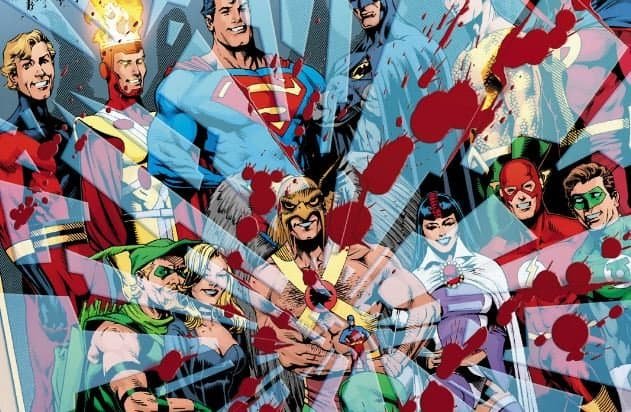
Unlike the previous examples, Identity Crisis wasn’t a universe-changing event or a reboot, but rather a situation that changed that happened in the post-Crisis on Infinite Earths continuity and how the characters are dealing with it.
In this story we find the wife of the Elongated Man, Sue Dibny, being murdered by a mysterious individual who knew his husband’s secret identity and the heroes start their quests to discover who did, also finding out that the murderer is going after other heroes’ significant others. And most importantly, we discover a lot of dark secrets that the heroes have maintained throughout the years and the moral debates that said secrets put on the table.
Writer Brad Meltzer is a highly-regarded novelist and this was his first foray in the world comics, quickly showing with this comic, Green Arrow’s Archer’s Quest storyline and his Justice League run, that he is extremely well-versed in the universe, the continuity and that he is a DC fan. In that sense, you will always get a feeling of care and attention to detail with his comic book writing, which I actually enjoy and find very human and entertaining.
Having said that, Identity Crisis offers many dark revelations about the DC heroes that are controversial, to say the least, and this event has been heavily criticized by longtime readers as an insult and desecration of everything this company stands for. While I wouldn’t go as far as that, I do have to say that the revelations (which I won’t say, because I think you should read this miniseries) don’t really add too much to the characters in question, other than trying to make the DC Universe a lot more.
I’m not too hard on Meltzer because he showed in his later DC work that he understands what makes these characters tick; this was actually one of the many times the company’s editorial wanted to make the universe darker in the last two decades. But Identity Crisis does have good moments and Rags Morales’ art is phenomenal, so I truly recommend it to you.
4. Infinite Crisis (2005).
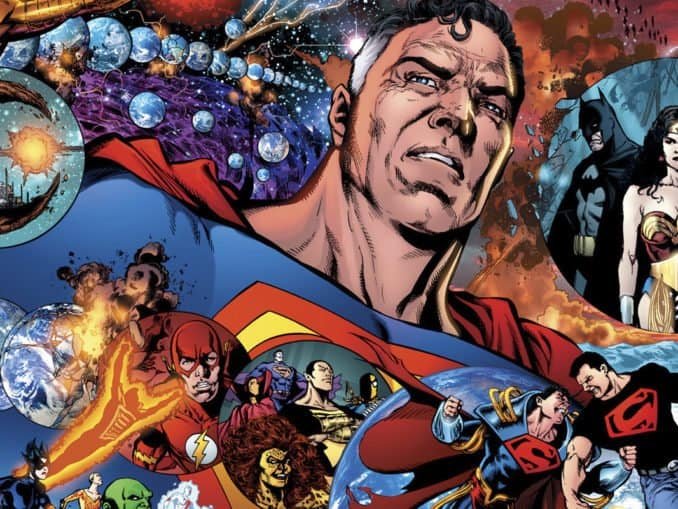
Infinite Crisis was spearheaded by star writer Geoff Johns and the goal of this event was to celebrate the original Crisis on Infinite Earths on its 20 anniversary with a sequel of sorts. And while it is a bit convoluted to new readers, I would argue that it was a love letter to the fans of the post-Crisis era on many levels.
There were many events that led to Infinite Crisis, turning the DC Universe darker and darker until the remaining heroes of the pre-Crisis Multiverse (Golden Age Superman from Earth-2, Superboy Prime from Earth-Prime and Alexander Luthor from Earth-3) decided to come back to this universe and rebuild their own universes because they considered the post-Crisis heroes as failures due to them becoming too tortured and flawed. Things would escalate from there and many heroes would have to take a good look at themselves in order to save their universe.
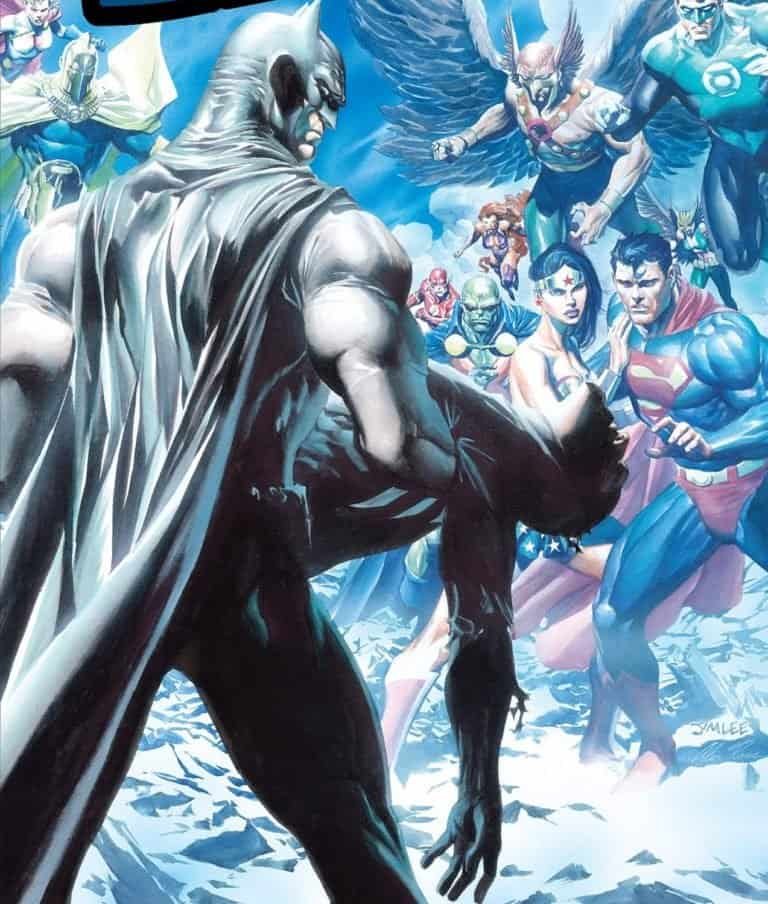
Infinite Crisis is often viewed as controversial due to how the survivors of the pre-Crisis Multiverse are portrayed, but I personally love this story because it is a celebration of the post-Crisis continuity, with many of the heroes that grew and started there (Nightwing, Green Lantern Kyle Rayner, Kid Flash, Superboy Conner Kent and others) having a very strong and prominent role while the likes of Superman, Batman and Wonder Woman slowly remember what made them heroes to begin with.
I have often said that Geoff Johns understands DC characters better than pretty much everybody in the last twenty years or so and he picks all these characters, many of them broken and darkened, and gives them a rekindled desire for heroism and to do good. He shows that the post-Crisis universe has led to many new interesting characters and storylines, but also recovering some of that classic wholesome DC vibe to it.
I personally think this is the strongest Crisis in terms of storytelling and my personal favorite, but I’m going to leave you guys to decide!
5. Final Crisis (2008).
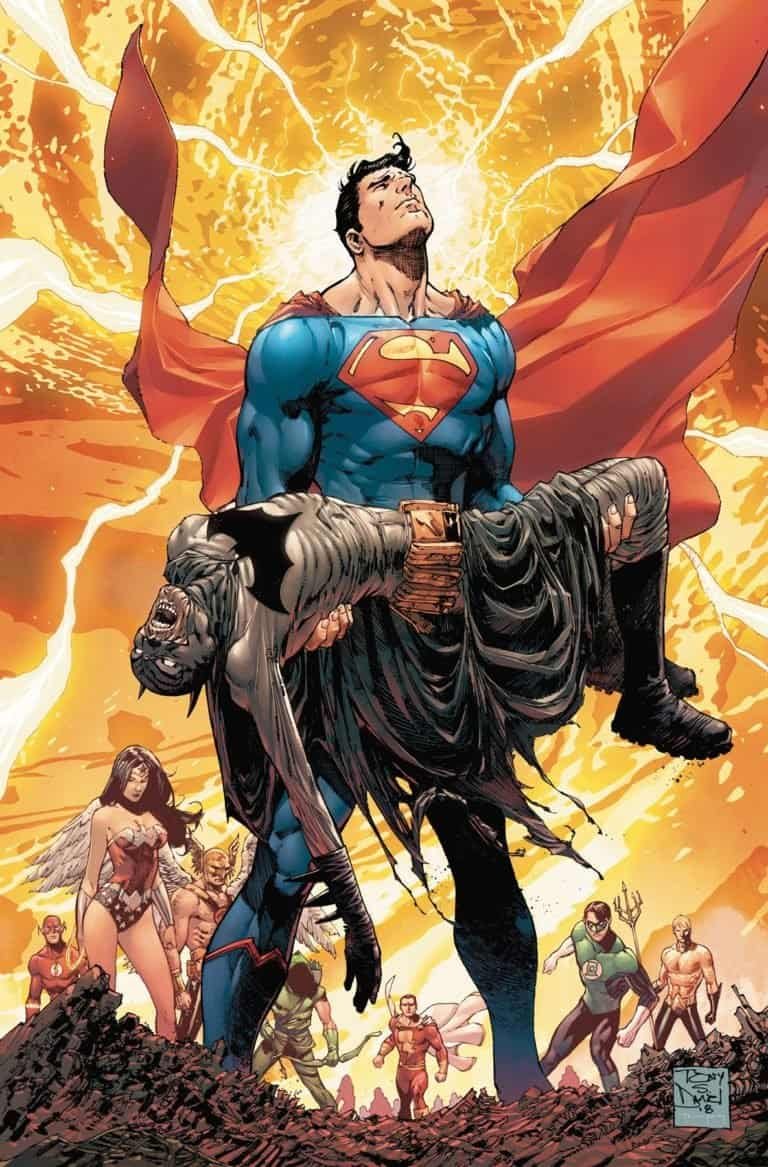
Writer Grant Morrison has a tendency of doing grand scale storylines and he also has a tendency of going over the top with his work, with 2008’s Final Crisis being perhaps the best example of his best and worst habits at display.
The plot of Final Crisis is very complicated, but I will try to be simple about it: Darkseid, ruler of the planet Apokolips, is dying and has taken the body of a human being as he finally finds the Anti-Life Equation, which is going to be used to destroy reality itself. Martian Manhunter, a founding member of the Justice League, dies early in the story, along with the New Gods, who are Darkseid’s natural foes. As reality collapses, all the different heroes such as Batman, Superman, Wonder Woman, Flash and Green Lantern, are separated from the rest of the League and they have to find ways to put an end to this cycle of destruction.
I’m being very simple with the synopsis of this event as there are many different subplots and themes that Morrison is using, which is very overwhelming and requires a time to sit down and absorb everything he is doing here. There are many great character moments and you can’t help but feel at awe with the scope of the entire event.
Is it a good story? That’s another discussion. I often find Final Crisis to be very enjoyable and interesting in terms of concepts and themes, but also very self-indulging and a bit pretentious, thus giving some validity to the rumor that Grant Morrison has a clause in his DC contract that stipulates that his work cannot be edited. I don’t know if it’s true, but it kind of makes you think.
It’s definitive the most inaccessible DC Crisis in the list and I would advise you to read it once you have a very good grasp of the New Gods, thus understanding Darkseid and his mythos a lot more.
6. Flashpoint (2011).

Not titled a Crisis, but one in spirit and themes.
Barry Allen, the Silver Age Flash, returned to the DC Universe a couple of years before and decided to go back in time to save his mother’s life before she was murdered by his arch nemesis, the Reverse Flash. By doing that, the whole timeline of the DC Universe changed: the Amazons and the people of Atlantis destroyed the planet as part of their war against one another; Bruce Wayne’s father, Thomas, became Batman; Hal Jordan never got the ring from Abin Sur because the latter is still alive and still a Green Lantern, and Cyborg, sponsored by the US government, is the only remaining superhero.
Written by Geoff Johns and drawn by the great Andy Kubert, Flashpoint is a very interesting take on an alternate DC Universe, showcasing how they would be without their classic sense of heroism and moral values. Despite being a miniseries, Johns carefully shows a world in decay and feels like it has existed for decades now, which is something very hard to accomplish. And while I don’t usually recommend reading the tie-ins, they give you a bigger glimpse of how different things are in this version of the DC Universe.
It was also due to the events of this storyline that we got DC’s second reboot, the New 52, which was a very controversial decision that, while commercially successful at first, didn’t really warm to the readers in the coming years. But Flashpoint itself is a very interesting storyline and much more accessible than the vast majority of the Crisis in this list.
The Flashpoint storyline brought some great stories like the Batman one from Azzarello & Risso. It’s also key to current events in Batman. Check it out!
You may also be interested in checking the Green Lantern story
Or maybe the Superman one…
7. Convergence (2015).
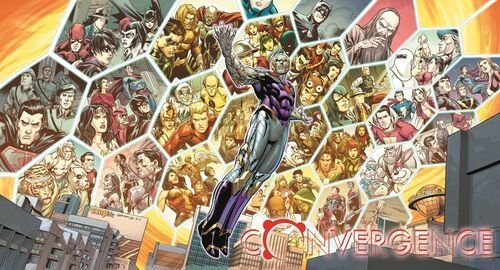
Perhaps the least well-received DC Crisis of all times, Convergence is about the villain Telos and how he takes several cities from multiple realities of the DC Multiverse so they have to fight one another in order to keep existing. So that is how we got different versions of the characters that we have seen in multiple stories throughout the years in an epic battle for survival!
Except that… it’s not that good. Convergence is actually a mess, often feeling derivative and without a clear understanding of what they want to achieve with this story, showing at times some of the worst vices that DC has had throughout the years. It’s fun to see these characters interacting with one another, but beyond a bit of nostalgia and fanservice, the reality is that Convergence is one of the weakest DC Crisis so far, although I won’t say it’s the worst.
8. Dark Knights: Metal (2017).
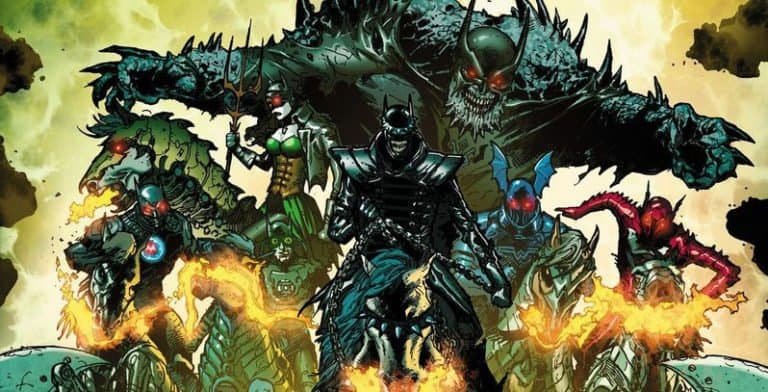
A Batman-centric event, it’s no wonder that the team made by writer Scott Snyder and artist Greg Capullo, known for their widely successful Batman run in the New 52, were in charge of this story, presenting the Dark Multiverse and several twisted and dark incarnations of Batman that serve one of the most powerful entities of that Multiverse, Barbatos.
Dark Knights: Metal is a very straightforward and action-based storyline, taking a lot of cues from Snyder’s Batman run: a lot of darkness, horrors and introspection into what makes heroes tick. It also has a lot of Snyder’s biggest vices, which includes a lot of grand scale situations, perhaps too much dialogue and way too much emphasis on Batman as the most important person that ever lived, which goes in contrast to his virtue of being just a very capable human being.
Having said that, Dark Knights: Metal doesn’t take itself too seriously in terms of storytelling and I think a lot of readers are going to enjoy it a lot more than I did.
I actually own the hardcover for this title and it’s beautiful! But we’re in the middle of the Covid quarantine and you might want to read it NOW, I point you to the digital edition
9. Doomsday Clock (2017).
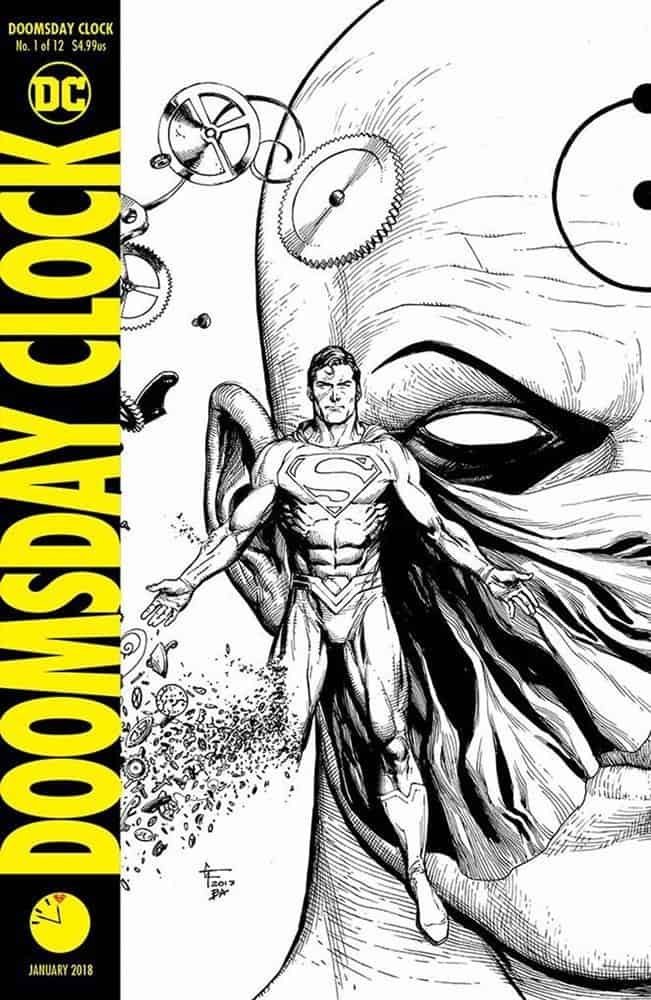
DC made yet another reboot in their comic book line in 2016 with DC Rebirth, trying to recover the fans’ good will and reestablishing many of the pre-Flashpoint elements that the fans cared about, like bringing the third Flash, Wally West, back. The in-story explanation was that a mysterious force was controlling the DC Universe and the 2017 event, Doomsday Clock, shows us that it was Dr. Manhattan from Watchmen, who was doing it and now the DC heroes, led by Superman, have to face a world on the verge of collapse and an all-powerful entity that is toying with their existences.
Writer Geoff Johns was the mastermind behind the success of Rebirth and this event was its logical conclusion, with him mirroring some of Alan Moore’s techniques in Watchmen, but adding his own flavor to it. And while I think the ending is somewhat underwhelming, I find the comic as a whole very enjoyable and the dichotomy between Manhattan and Superman really enjoyable–almost like a meta commentary about the eternal debate between edgy heroes vs. the most aspirational types.
I would go as far as say that Doomsday Clock is one of the most fascinating, entertaining and engaging mainstream comics of the last decade. I cannot sadly say the same thing about our last book on the list…
Sorry guys, but this comes in two parts…
10. Heroes in Crisis (2018).
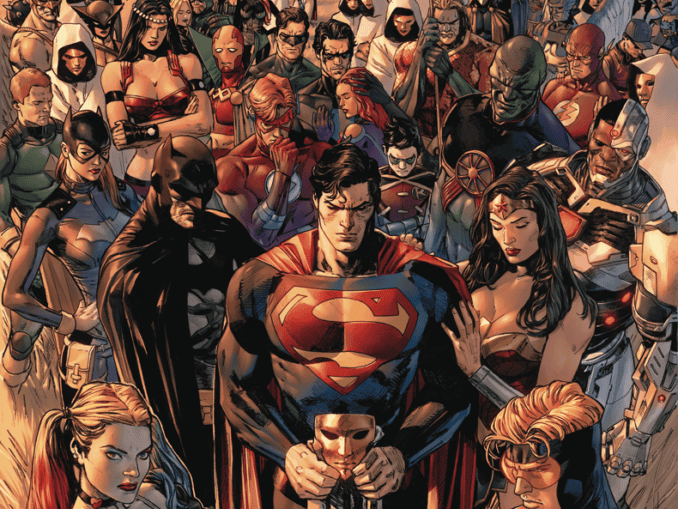
Widely viewed as the end of the success of Rebirth and written by Tom King, Heroes in Crisis reveals that the DC heroes had a secret place called Sanctuary where they installed robots that served as psychiatrists to deal with the different traumatic experienced they endure in the superhero business, but it all falls apart once a murdered is committed in Sanctuary and several heroes are killed, including Wally West, who came back during the Rebirth initiative.
I’ll be honest here: I don’t like Heroes in Crisis. I find it a very pretentious and derivative creative effort that takes way too many elements from Identity Crisis without Brad Meltzer’s knowledge of the comics and skillful writing. Clay Mann does a phenomenal job in the art department and I’ll give the book that, but I think Tom King really missed the mark here about what the DC Universe and their characters stand for and Heroes in Crisis comes off as even mean-spirited with some of the takes on the heroes in this storyline, especially with the big revelation in the third act.
I respect you if you enjoy this comic, but I personally find it one of DC’s lowest moments and definitely the worst event with the Crisis term attached to it.
Have you enjoyed reading our list of the DC Comics Crisis events? If so, check out some of our other articles!
And as we always say… keep reading good comics!!

